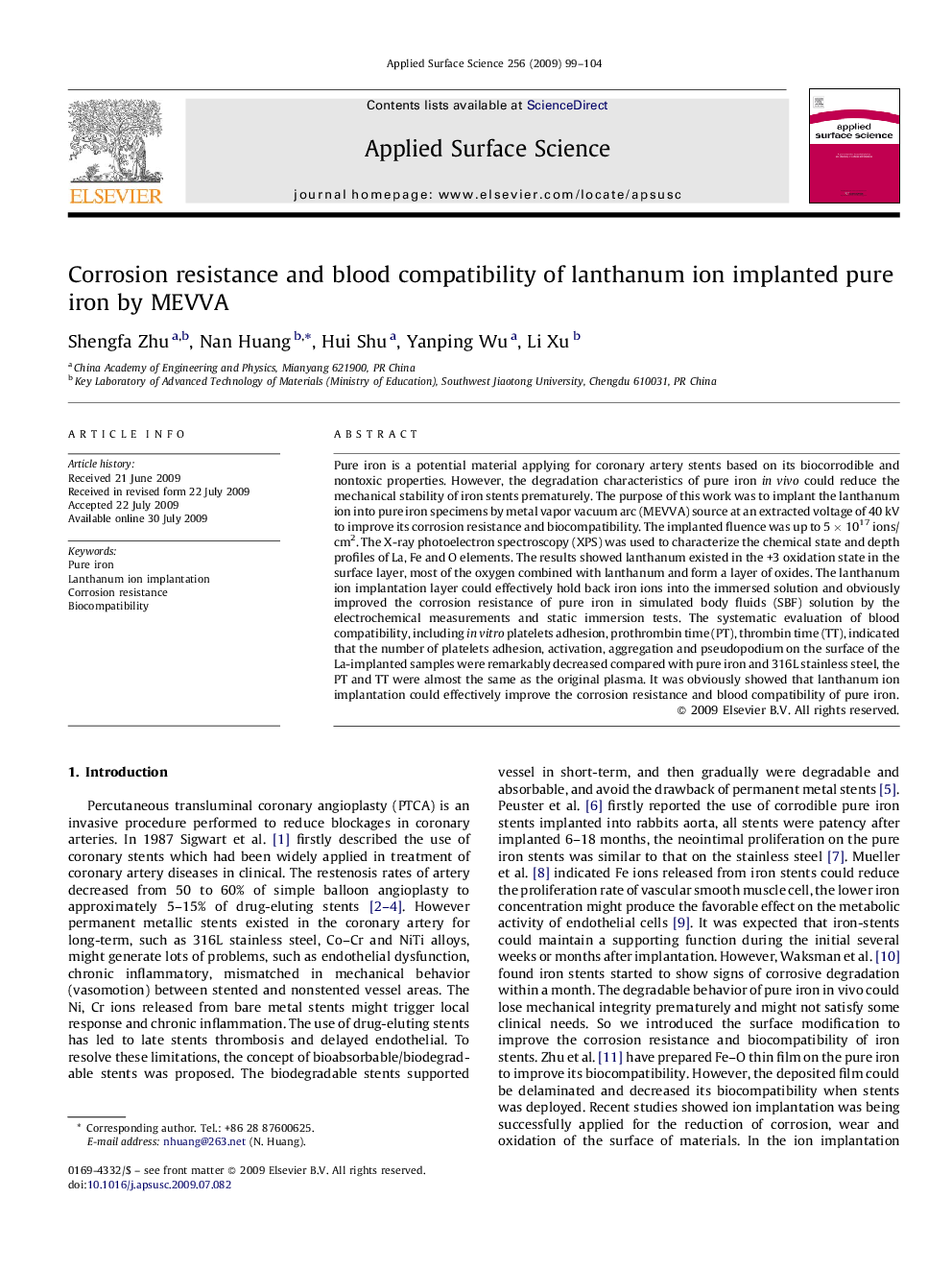| Article ID | Journal | Published Year | Pages | File Type |
|---|---|---|---|---|
| 5361151 | Applied Surface Science | 2009 | 6 Pages |
Abstract
Pure iron is a potential material applying for coronary artery stents based on its biocorrodible and nontoxic properties. However, the degradation characteristics of pure iron in vivo could reduce the mechanical stability of iron stents prematurely. The purpose of this work was to implant the lanthanum ion into pure iron specimens by metal vapor vacuum arc (MEVVA) source at an extracted voltage of 40Â kV to improve its corrosion resistance and biocompatibility. The implanted fluence was up to 5Â ÃÂ 1017Â ions/cm2. The X-ray photoelectron spectroscopy (XPS) was used to characterize the chemical state and depth profiles of La, Fe and O elements. The results showed lanthanum existed in the +3 oxidation state in the surface layer, most of the oxygen combined with lanthanum and form a layer of oxides. The lanthanum ion implantation layer could effectively hold back iron ions into the immersed solution and obviously improved the corrosion resistance of pure iron in simulated body fluids (SBF) solution by the electrochemical measurements and static immersion tests. The systematic evaluation of blood compatibility, including in vitro platelets adhesion, prothrombin time (PT), thrombin time (TT), indicated that the number of platelets adhesion, activation, aggregation and pseudopodium on the surface of the La-implanted samples were remarkably decreased compared with pure iron and 316L stainless steel, the PT and TT were almost the same as the original plasma. It was obviously showed that lanthanum ion implantation could effectively improve the corrosion resistance and blood compatibility of pure iron.
Related Topics
Physical Sciences and Engineering
Chemistry
Physical and Theoretical Chemistry
Authors
Shengfa Zhu, Nan Huang, Hui Shu, Yanping Wu, Li Xu,
